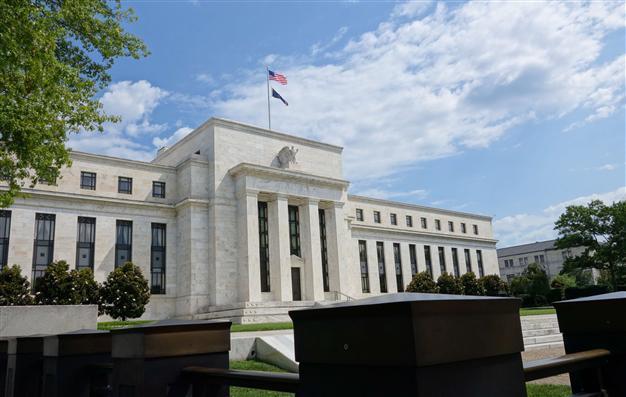Fed begins two-day meeting, result seen too close to call
WASHINGTON - Reuters

This August 1, 2015 file photo shows the US Federal Reserve building in Washington, DC. AFP Photo
The Federal Reserve began a two-day policy meeting on Sept.16 with economists evenly split on whether Sept.17 will see the first official U.S. interest rate rise since 2006.
The decision by the U.S. central bank's Federal Open Market Committee (FOMC) is expected on Sept.17 at 2 p.m. (1800 GMT).
U.S. economic data are flashing conflicting signals, with unemployment falling but inflation subdued, while slowing growth in China has led to a 40 percent fall in Shanghai stocks in three months, leaving global markets on edge.
Global banks and investment funds see the chances for a rate increase as essentially a toss-up, although most experts see a slightly higher probability for no change in monetary policy.
In a Reuters poll of 80 economists, 45 said the Fed would keep its benchmark interest rate between zero and 0.25 percent, while 35 expected a hike.
Among primary dealers, 12 banks expect it to hold steady and the remaining 10 expect a rate increase.
"You can make a strong case either way for the Fed to begin raising interest rates or waiting," said Ryan Sweet, a senior economist at Moody's Analytics in West Chester, Pennsylvania.
"The prudent risk management approach would argue for them to hold off, but if the Fed was really data dependent there is a very strong case to raise rates on Thursday."
Based on trading in Chicago Mercantile Exchange fed futures contracts, though, financial markets on Sept.16 saw only a 23 percent chance of a rate rise at the Sept.17 FOMC meeting.
Unemployment falling, inflation subdued The Federal Reserve is mandated by Congress to consider both unemployment and inflation when formulating monetary policy.
The U.S. unemployment rate fell to 5.1 percent in August, a level the Fed sees as likely to boost both wages and inflation, but average hourly earnings have risen only 2.2 percent in the past year.
However, even with the federal funds rate target at 0.00-0.25 percent since 2008, there has been little sign of U.S. inflation while economic growth was running at a 3.7 percent annual pace in the second quarter of this year.
In data reported on Sept.16 by the U.S. Labor Department, consumer prices unexpectedly fell in August as gasoline prices resumed their decline and a strong dollar curbed the cost of imports. The dollar has gained 17.1 percent against the currencies of the United States' main trading partners since June 2014.
The Consumer Price Index slipped 0.1 percent, the first drop since January, after edging up 0.1 percent in July. In the 12 months through August, the CPI rose 0.2 percent after a similar gain in July.
So-called core CPI, which strips out food and energy costs, ticked up 0.1 percent last month after a similar rise in July.
In the 12 months through August, core CPI increased 1.8 percent. It was the fifth time in six months that the 12-month change was 1.8 percent.
The prospect of a rate rise has strengthened the dollar in the past year, while weakening emerging market currencies already hit by falling demand for commodities from China.
Stocks on major world markets tumbled in August as a result, with the JP Morgan world index falling 7.0 percent and the U.S. SP 500 index off 6.0 percent.
"Fed Chair Janet Yellen has been conspicuously silent, with no significant comments since July's congressional testimony," wrote Standard Chartered senior economist Thomas Costerg in a note explaining the decision to switch to predicting a December rate rise.
"We think the recent global market volatility - driven by ongoing concerns about global growth - has raised the bar for a first rate hike near term."
